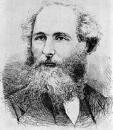| |

Home
Overview
Instructors
Course Info
Communications
Calendar
Unit Topics
Notes
Videos
Problem Sets
Zoom
Email
Discussion
Slack
|
|
|
|
PHY 415: Electromagnetic Theory I
Prof. S. Teitel: stte@pas.rochester.edu ---- Fall 2021
Unit 2
Unit 1 • Unit 2 • Unit 3 • Unit 4 • Unit 5 • Unit 6 • Unit 7 • Unit 8
Elecrostatics and Magnetostatics
September 9 to September 30
You should review the notes and videos below by September 30.
Questions on the material of Unit 2 may be posted on the Unit 2 Discussion Board, or on the Unit 2 Slack channel.
Your response to Discussion Question 2 is due Tuesday, September 14 at 5pm.
Your solutions to Problem Set 2 are due Thursday, September 16, at 5pm.
Your response to Discussion Question 3 is due Sunday, September 19, at 9pm.
Your solutions to Problem Set 3 are due Thursday, September 23, at 5pm.
Your response to Discussion Question 4 is due Tuesday, September 28, at 5pm
Your solutions to Problem Set 4 are due Thursday, September 30, at 5pm.
Your solutions to Problem Set 5 are due Thursday, October 7, at 5pm.
In this unit we discuss problems in electrostatics and magnetostatics in terms of solving the Poisson's equation for the appropriate potential. We will develop specialize mathematical methods for several simple geometries. Some interesting physical examples will be discussed.
Below is a list of links to course notes for each topic in this unit, followed by links to recorded video lectures.
Notes and Video Lectures
- Notes 2-1 - Electrostatics as a boundary value problem
- Video 2-1.1 - Physical meaning of the electrostatic potential, the Green's function, review of conductors in electrostatics [24 min]
- Video 2-1.2 - The Poisson equation as a boundary value problem, review of electrostatic boundary conditions at a charged surface [44 min]
- Video 2-1.3 - Additional examples [34 min]
- Notes 2-1-supp - Supplemental: Green's identities, uniqueness, Green's functions for Dirichlet and Neumann boundary conditions
- Notes 2-2 - The image charge method for electrostatics
- Video 2-2.1 - A point charge in front of a grounded plane [33 min]
- Video 2-2.2 - A point charge in front of a grounded sphere [31 min]
- Video 2-2.3 - A point charge in front of a charged sphere and a neutral sphere [47 min]
- Notes 2-3 - The method of separation of variables for electrostatics
- Video 2-3.1 - Seperation of variables in rectangular coordinates [25 min]
- Video 2-3.2 - Seperation of variables in cylindrical coordinates [42 min]
- Video 2-3.3 - Seperation of variables in spherical coordinates [37 min]
- Video 2-3.4 - Examples with azimuthal symmetry [44 min]
- Notes 2-3-supp - Supplemental: Eigenfunction expansion for the Green's function
- Notes 2-4 - The electric multipole expansion
- Video 2-4.1 - The monopole, dipole, and quadrupole moments, general expansion [52 min]
- Video 2-4.2 - The effect of the origin of the coordinates, quadrupole example [45 min]
- Video 2-4.3 - The quadrupole term more generally, angular averaged potential [26 min]
- Notes 2-4-supp - Another example
- Notes 2-5 - Magnetostatics
- Video 2-5.1 - Poisson's equation for the magnetic potential, the magnetic dipole approximation [54 min]
- Video 2-5.2 - Magnetostatic boundary conditions at a current sheet, the scalar magnetic potential and magnetostatic boundary value problems [49 min]
- Video 2-5.3 - Example of a current carrying loop [31 min]
- Notes 2-6 - Symmetry under a parity transformation
- Video 2-6.1 - Symmetry of electric and magnetic fields under reflection, vectors vs psuedovectors [15 min]
|
|